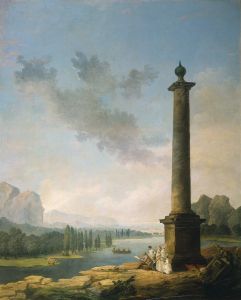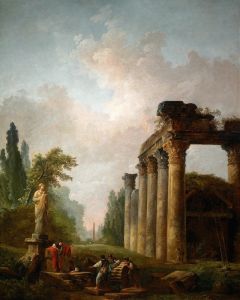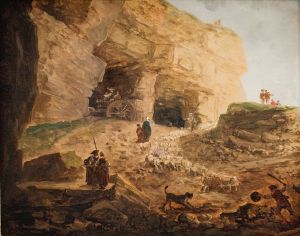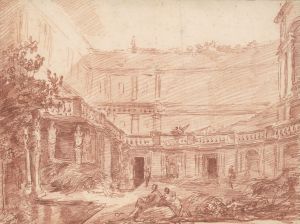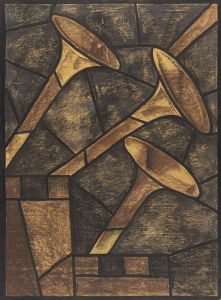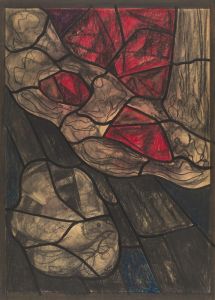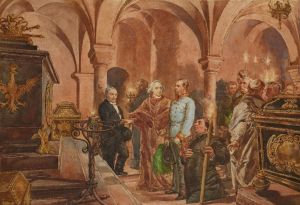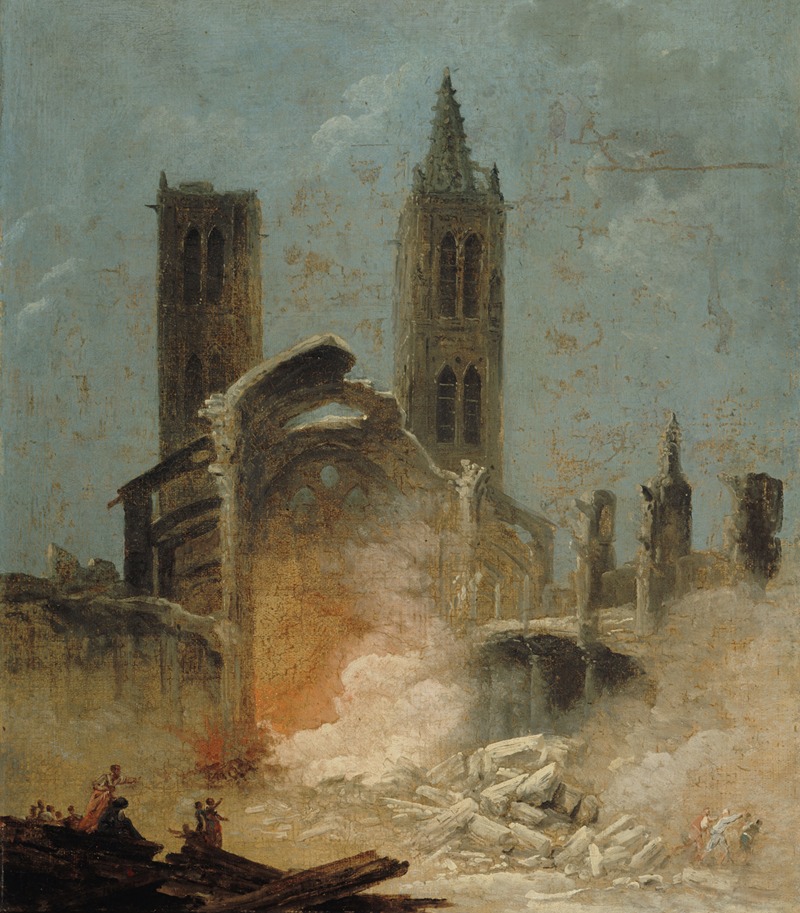
La Démolition de l’église Saint-Jean-en-Grève, en 1800
A hand-painted replica of Hubert Robert’s masterpiece La Démolition de l’église Saint-Jean-en-Grève, en 1800, meticulously crafted by professional artists to capture the true essence of the original. Each piece is created with museum-quality canvas and rare mineral pigments, carefully painted by experienced artists with delicate brushstrokes and rich, layered colors to perfectly recreate the texture of the original artwork. Unlike machine-printed reproductions, this hand-painted version brings the painting to life, infused with the artist’s emotions and skill in every stroke. Whether for personal collection or home decoration, it instantly elevates the artistic atmosphere of any space.
Hubert Robert's painting La Démolition de l’église Saint-Jean-en-Grève, en 1800 depicts the destruction of the Church of Saint-Jean-en-Grève in Paris, which occurred during the early 19th century. Hubert Robert (1733–1808) was a prominent French painter known for his works that often combined elements of architectural ruins and landscapes, earning him the nickname "Robert des Ruines." This particular painting is one of his many works that document the transformation of urban spaces during a period of significant political and social upheaval in France.
The Church of Saint-Jean-en-Grève, located in the Marais district of Paris, was originally constructed in the 13th century and served as a parish church for centuries. It was situated near the Place de Grève, a historic square that was a central location for public events, including executions. The church was notable for its Gothic architecture and its role in the religious and communal life of the neighborhood.
During the French Revolution, many religious institutions in France were suppressed, and their properties were confiscated by the state. The Church of Saint-Jean-en-Grève was among the many churches that were deconsecrated and repurposed or demolished during this period. By 1800, the church was dismantled as part of the broader secularization and urban redevelopment efforts that characterized the revolutionary era.
In La Démolition de l’église Saint-Jean-en-Grève, en 1800, Hubert Robert captures the moment of the church's destruction. The painting reflects his characteristic style, blending historical documentation with a sense of romanticized decay. The composition likely emphasizes the interplay of light and shadow, as well as the textures of the crumbling stone, to evoke both the grandeur of the past and the impermanence of human creations. Robert's work often invites viewers to reflect on the passage of time and the cycles of construction and destruction that shape human history.
While the exact details of the painting's commission or its current location are not widely documented, it remains an important example of Robert's ability to merge historical events with his artistic vision. The painting serves as both a record of a specific moment in Parisian history and a broader commentary on the transformation of urban and cultural landscapes during times of upheaval.





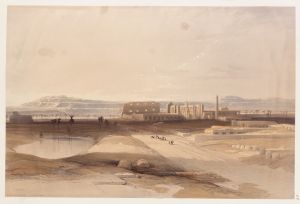
![Temple of Wady Saboua [Wadi al-Sabua], Nubia.](/imgs/217551/s/david-roberts-temple-of-wady-saboua-wadi-alsabua-nubia-52e62db.jpg)

![The Great Sphinx, Pyramids of Gizeh [Giza]. July 17th, 1839.](/imgs/217557/s/david-roberts-the-great-sphinx-pyramids-of-gizeh-giza-july-17th-1839-98f269c8.jpg)
